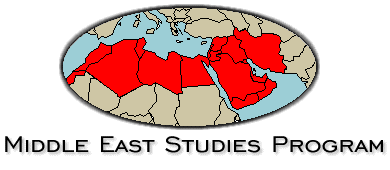These seven reports examine the overall trends
on global energy. Each report focuses on a key
aspect of the changing geopolitics of energy
and shows key issues, trends, and developments
in a summary narrative and graphic and tabular
form.
| Key Short Term Geopolitical
Issues |
4 |
| Key Mid-to-Long Term
Geopolitical Issues |
5 |
|
Key Technology Issues
|
6 |
|
Growing Demand for
the World Economy
|
7 |
|
Key Demand Issues
|
8 |
Setting the Stage: Rising
World Energy Use By Region Over the
Last Decade: 1985-1994
|
9 |
Future World Energy
Use: 1990-2020: The Developing World
-- Particularly Asia -- Dominates Demand
Growth
|
10 |
Different Sources Indicate
that The Developing World Averages Two
to Four Times the Demand Growth of Industrialized
States
|
11 |
But, Much is Dependent
on Global Economic Growth
|
12 |
|
The Impact of Energy Supply
to the Industrialized States is Changing
Radically
|
13 |
Most Industrialized
Regions Show Relatively Slow Growth
in Total Energy Demand
|
14 |
Radically Different
Sources Agree on Low Demand Growth in
the Industrialized States
|
15 |
US versus World Energy
Use: 1990-2020: The Vast Majority of
Future Demand Growth is Foreign
|
16 |
|
Energy Supply to the Developing
States Must Rise Sharply Under Current
Economic Assumptions
|
17 |
Developing Asian Nations,
Latin America, and the Recovery of the
FSU and Eastern Europe Dominate the
Growth of World Energy Demand
|
18 |
All Major Sources Agreed
on Extremely High Demand Growth in the
Developing World Before the Crisis in
Asia:
|
19 |
Impact of the "High
Growth" Regions on World Energy
Demand
|
20 |
Comparative Growth of
Energy Demand in High Growth Regions
|
21 |
Future Asian Energy
Use: 1990-2020
|
22 |
China, Pacific Rim,
and India Are the Source of Virtually
All Growth in Asian Demand
|
23 |
But, Asian Economic
Crisis Could Change All of the Geopolitical
Trends
|
24 |
|
Projected Total Energy
Supply for the World Economy
|
25 |
|
Key Supply Issues
|
26 |
The World is Not Running
Out of Oil: The Steady Increase in Proven
Global Oil Reserves in Billions of Barrels
|
27 |
|
Oil and Gas Continue
to Dominate Rising World Energy Demand:
1970-2020
|
28 |
Fossil Fuels Still
Dominate World growth in Energy Demand,
and the Growth in Demand for Oil is
By Far the Most Critical Factor
|
29 |
|
Nuclear Issues
|
30 |
Asia Will Drive Future
Increase in Demand for Nuclear: Total
World Consumption by Region: 1990-2020
|
31 |
Nuclear Potential is
Far Greater if Safety and Permitting
Problems Can Be Solved
|
32 |
|
Coal Issues
|
33 |
China and India Will
Drive Future Increase in Demand for
Coal: Total World Consumption by Region:
1990-2020
|
34 |
Coal is the Forgotten
Energy Export: 1990-2020
|
35 |
Demand for Coal Imports:
1990-2020
|
36 |
Regional Coal Reserves
as a Percent of World Total
|
37 |
World Coal Reserves
by Region in Millions of Tons
|
38 |
Coal Reserves by Key
Nation
|
39 |
|
Renewables and New Sources
of Energy
|
40 |
The Growth of Renewables
and New Sources of Energy Will Have
Little Impact on Rising World Energy
Demand: 1970-2020
|
41 |
North America and Asia
Will Lead in Increase in Hydroelectric,
Geothermal, Wind, Solar and Other Renewables:
1990-2020
|
42 |
|
Barring an Unanticipated
Breakthrough, Technology Gain in Oil,
Gas, Coal, and Nuclear Will Be Far More
Important Than the Petty Increases From
New Sources of Energy
|
43 |
Even in the US, Renewables
& New Fuels Will Have a Negligible
Near to Mid Term Future Growth: Total
Consumption Versus Domestic Production,
Imports, and New Fuels: 1990-2015
|
44 |
US Use of Renewables
Shows Little Impact from Advanced Technologies:
1990-2020
|
45 |
The US Will Make Negligible
Net Progress in Reforming Energy Use
in the Transportation Sector
|
46 |
US Efforts to Create
Truly New Energy Sources Are So Inefficient
They Will Produce No Net Energy Gain
or Emission Savings
|
47 |
|
Energy and Pollution:
Global Warming is Only Part of the Problem
|
48 |
|
Key Issues Affecting Energy
Impacts
|
49 |
Who Pollutes? The Developing
World and Asia Will Overtake the Industrialized
World and The West: Total World Carbon
Emissions 1995- 2020
|
50 |
Who Makes Pollution
Grow? Developing Asia is Clearly the
Problem
|
51 |
|
Impact of Oil and Gas
on Present and Future Global Energy Demand
|
52 |
| Key Oil Issues |
53 |
Estimated Growth of
Oil and Gas Use: 1970-2020
|
54 |
Growing World and US
Dependence on Imported Oil: 1990-2020
|
55 |
Asia Will Drive Most
of the Future Increase in Demand for
Oil: Total World Oil Consumption by
Region: 1990-2020
|
56 |
| Key Gas Issues |
57 |
North America, the
FSU, and Western Europe Will Stay the
Largest Consumers, but Asia Will Drive
Most of the Increase in Gas Demand
|
58 |
| Oil Reserves and Geopolitics
|
59 |
Shifts in the Regional
Balance of Oil Reserves
|
60 |
The Middle East and
the Gulf Dominate Future Oil Supply:
World Oil Reserves by Region as a Percent
of World Total
|
61 |
OPEC versus Non-OPEC
Production, Reserves and Refining Capacity
|
62 |
OPEC Status by Country
|
63 |
The Middle East and
the Gulf Dominate Future Oil Supply:
World Oil Reserves by Region in Billions
of Barrels
|
64
|




